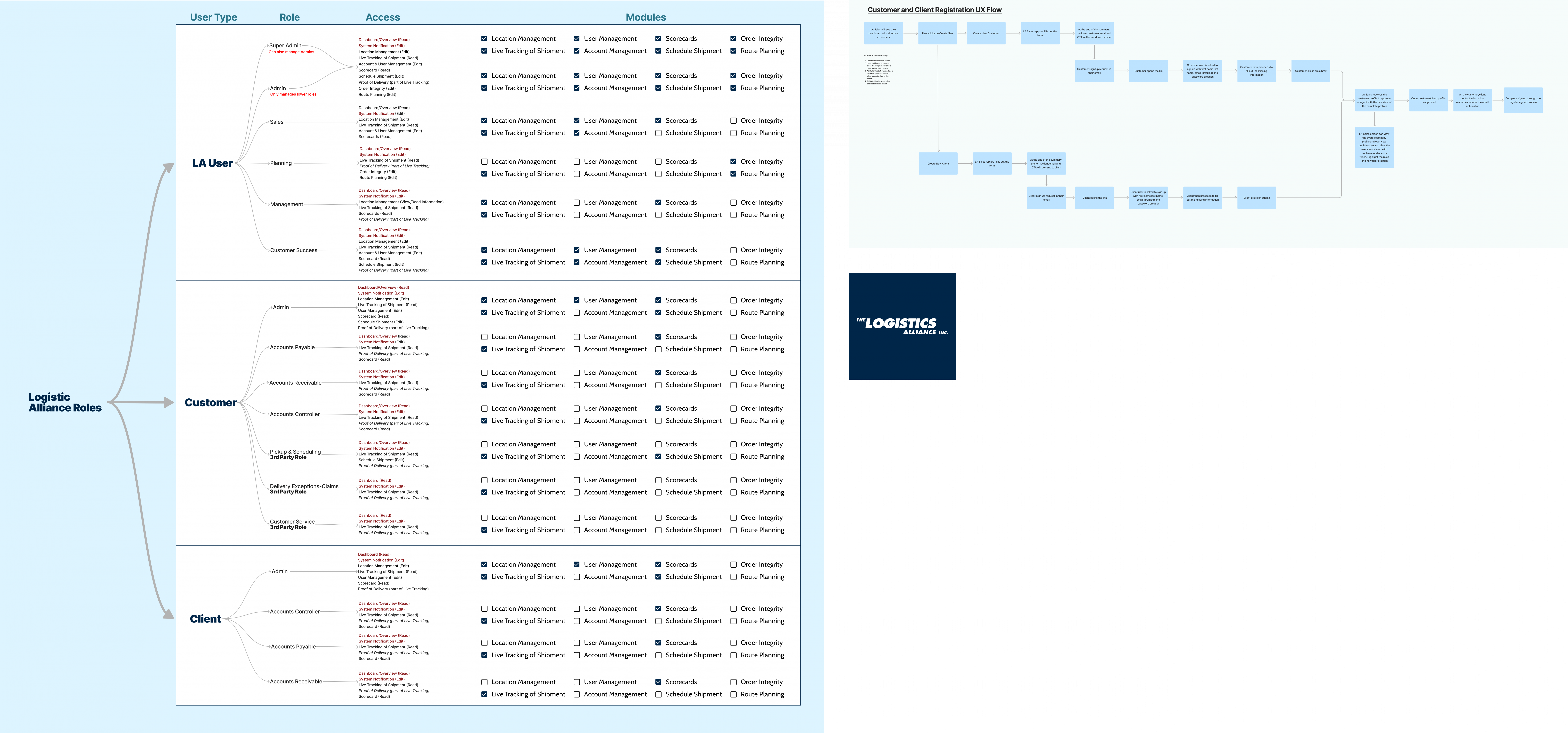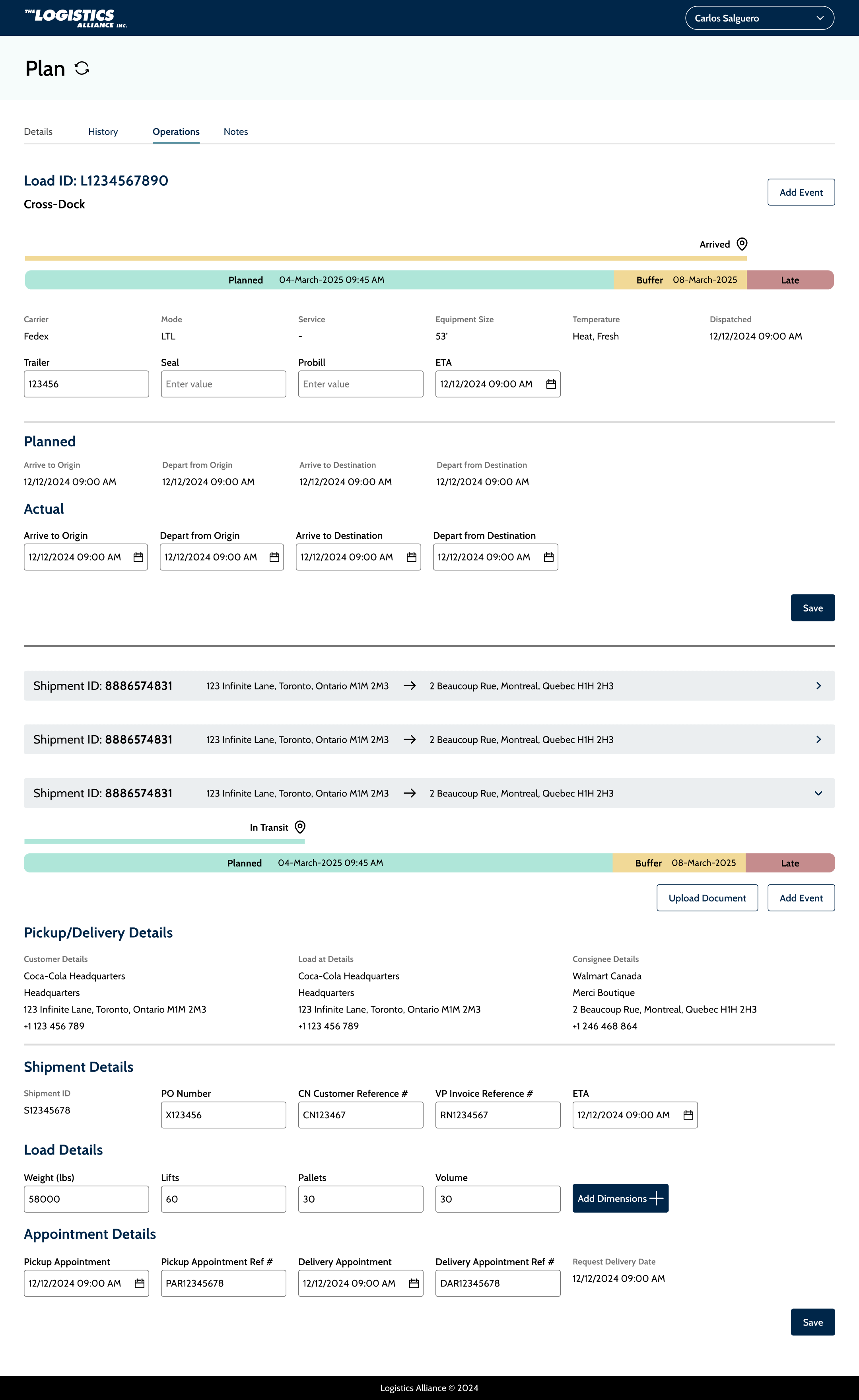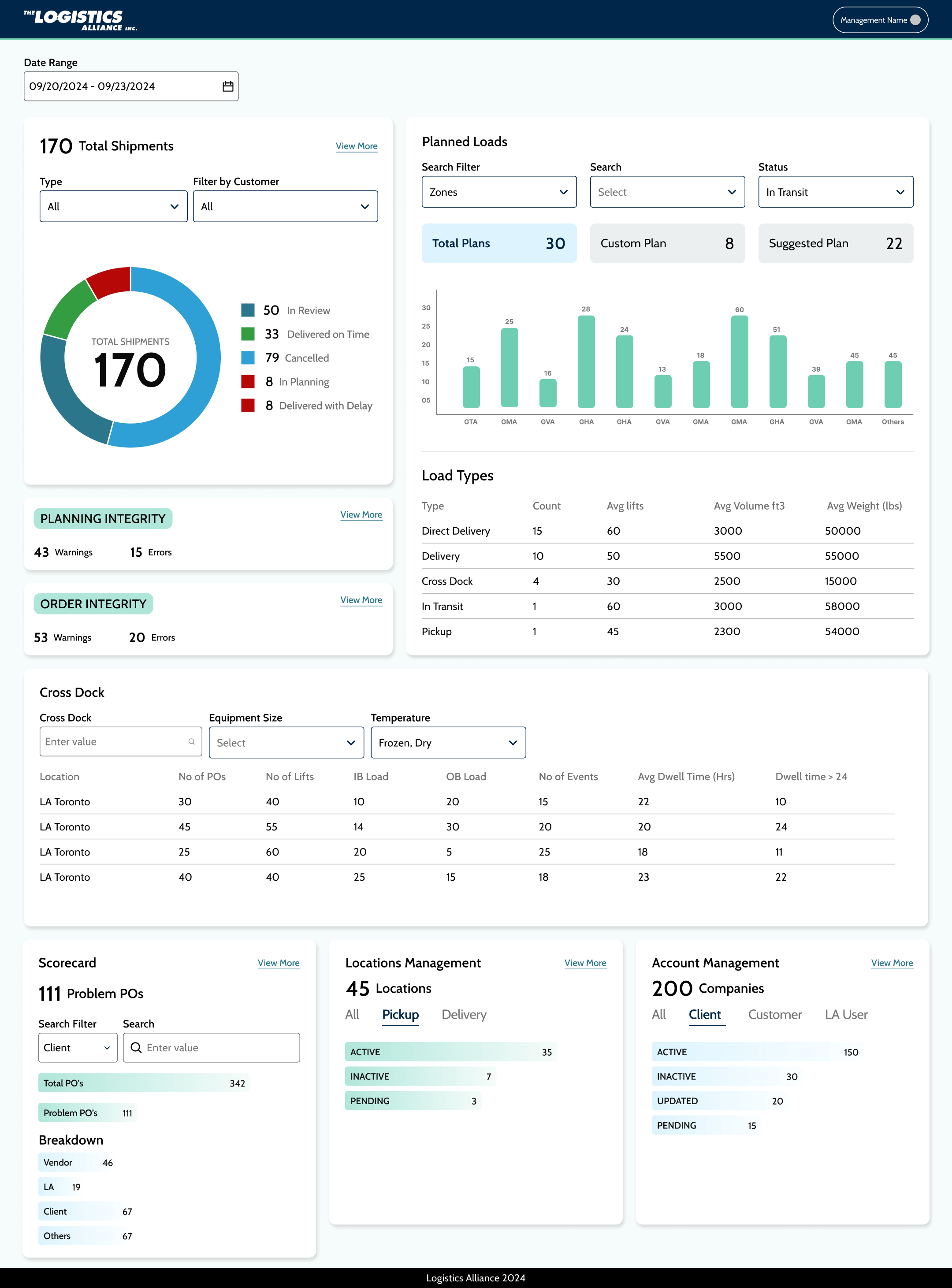
Challenges
Our client, a large logistics provider, wanted to unify its disconnected transportation workflows under a single digital platform. Their existing systems operated in silos, resulting in poor visibility, inconsistent communication, and delayed decision-making across dispatchers, drivers, and management. Manual, paper-based processes and outdated interfaces added complexity, making it difficult to track shipments and manage performance in real time.
The challenge was to design a cohesive, data-driven Transportation Management Solution (TMS) that would simplify operations for multiple roles, enable transparency across the network, and drive adoption through a modern, intuitive experience, all without disrupting ongoing delivery operations.
Approach
We began by mapping the logistics ecosystem across dispatchers, drivers, planners, and executives to understand how disconnected systems impacted efficiency. Through stakeholder interviews and journey mapping, we identified critical friction points such as frequent tool switching, delayed approvals, and the lack of unified performance metrics.
Our approach was guided by a service design framework, focusing not only on user experience but also on the interconnected services behind it. This framework emphasized collaboration, system integration, and visual transparency across workflows.
With the client’s operational and technical teams, we co-created a blueprint that prioritized usability, scalability, and modularity. The solution aimed to enable collaboration across partners, integrate seamlessly with legacy systems, and surface real-time insights to guide decision-making.
Solution
Research & Discovery
Using insights from journey mapping, we defined core modules for the new TMS:
- Shipment Dashboard: For end-to-end tracking and visibility.
- Dispatch Planning: To manage schedules and resource allocation.
- Carrier Collaboration Portal: To streamline communication between partners.
- Performance Analytics: To track KPIs and operational efficiency.
- Admin Console: For configuration and governance.

Design Strategy
Low-fidelity wireframes validated key workflows and confirmed that users could access and act on the right information with minimal effort. High-fidelity designs built in Figma applied a modular and accessible design system that balanced data richness with clarity.
The interface introduced dynamic shipment cards, inline collaboration panels, and an integrated map-tracking feature, while a mobile-first companion app ensured accessibility for drivers on the move.
Our iterative design process combined field testing with executive validation, ensuring that the final product met both operational needs and business goals.


Success
- 35% reduction in task completion time
- 90% fewer driver input errors
- 40% improvement in overall operational efficiency
- Adoption doubled within three months
The transformation replaced fragmented, manual workflows with an integrated logistics ecosystem. Teams gained real-time visibility into operations, communication between partners became seamless, and performance tracking became data-driven. By grounding the design in service design principles, we bridged the gap between digital and operational experiences, creating a solution that scaled with the client’s growing logistics network.


Key Takeaway:
Service design unifies people, processes, and technology. By addressing operational pain points through human-centered design, organizations can achieve sustainable efficiency and alignment across every layer of service delivery.



